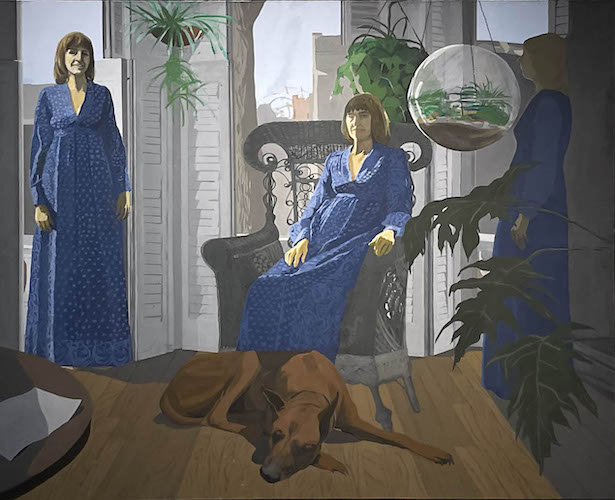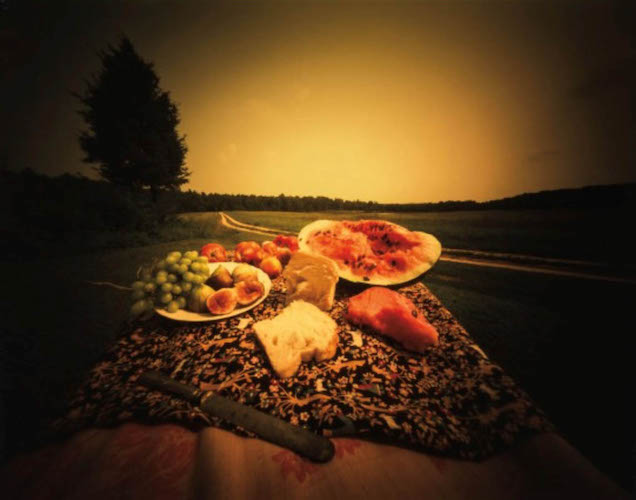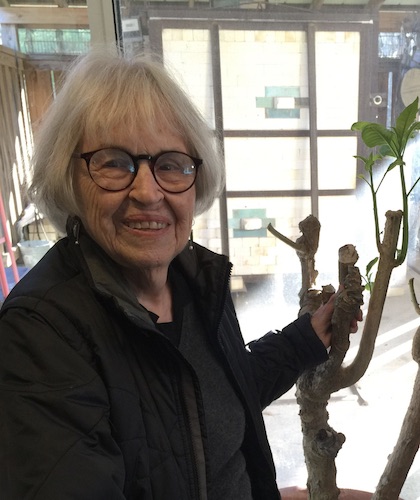A Return for Willie Anne Wright ’45
William & Mary's Muscarelle Museum of Art acquires works by renowned pinhole photographer and painter whose talent was encouraged as a student
April 10, 2024
By
Tina Eshleman
At age 99, artist Willie Anne Wright ’45 is enjoying a surge of interest in the work she created during a career lasting more than six decades.
Two exhibitions of her artwork opened last fall, including a major career-spanning retrospective at the Virginia Museum of Fine Arts (VMFA) in Richmond that continues through her 100th birthday in June. In March, William & Mary’s Muscarelle Museum of Art added six of her pieces to its collection — five photographs that the museum purchased and a painting that Wright donated. The Muscarelle team looks forward to having these works on view sometime after the museum reopens in the fall following a renovation and expansion that will triple its gallery space.

For Wright, the Muscarelle’s acquisition marks a homecoming to William & Mary, where she first felt encouraged and taken seriously as an artist. She donated her painting “Self Portrait With Gus” to the museum in memory of fine arts professor and department chair Thomas Thorne, who taught at W&M from 1940-1975.
Known as Willie Anne Boschen when she attended William & Mary, she was not able to take art classes for credit as a psychology major, but Thorne thought highly enough of her artwork to include it in campus exhibitions. He also selected two of her watercolor paintings for a 1944 show of college students’ art at the VMFA.
“He made me feel like he had confidence in my talent,” says Wright, a Richmond native who is most widely known for her experimental pinhole photography. “It certainly put me on a path. To this day, I appreciate the recognition he gave me.”
Until the recent acquisition, the Muscarelle had just one piece of her artwork in its collection: a watercolor titled “Williamsburg House,” dated 1945, the year she graduated. Melissa Parris, the museum’s deputy director of collections, exhibitions and operations, says she became interested in Wright’s pinhole photography after seeing images in the 2019 W&M Alumni Magazine profile “Forward & Back.”
Over the past couple of years, Parris and museum director David Brashear HON ’07 met several times with Wright and her daughter, Anne, and the team at Candela Books + Gallery to look through her vast archive of photographs. While visiting Wright’s longtime home in Richmond’s Fan District, a large painting at the top of the stairs caught their eye — Wright’s “Self Portrait With Gus,” made in 1974, featuring three images of the artist in the front room of her house.
“She knew we liked it, and she kindly offered to give it to William & Mary as a donation after we committed to purchasing the five photographs,” Parris says.

“Still Life With Richard’s Road #4,” from 1981, is one of Wright's pinhole images created with Cibachrome, a material typically used to make prints from color slides.
The acquisition of Wright’s work advances two priorities for the Muscaralle: expanding its collection of photography and increasing the number of works by women. Besides pinhole photography, the acquired works include images made without a camera, such as cyanotypes or lumen prints made by placing an object on photo paper and exposing it to light. (View the full list with thumbnail images.)
“Willie Anne Wright is, in many respects, a pioneer in the realm of photography,” Brashear says. “Her pinhole photography, carried out using a pinhole camera she built herself, delivers a perspective unique to Willie Anne's own eye. Her cyanotypes are inventive, and executed with precision.”
Along with the late painter Lynne Drexler ’51, Wright is one of the best known alumni artists whose work is represented in the museum’s collection, Parris says. Drexler attended William & Mary but did not receive a degree; both she and Wright later studied art at Richmond Professional Institute, now Virginia Commonwealth University, under trailblazing artist and educator Theresa Pollak. Unlike Wright, who spent most of her adult life in Richmond, Drexler settled in New York City.
Eliot Dudik, an associate teaching professor of art at William & Mary who specializes in photography, says he is intrigued by Wright’s experimentation with materials and subjects, as well as the cameras themselves.

“The vibrancy and distortions she obtained in her color, direct-positive, in-camera pinhole works are mesmerizing, and match the firecracker energy of her personality,” says Dudik, who spoke to the museum’s acquisitions committee about Wright’s work. “Her unique and timeless approaches in experimental processes, collage and pinhole photography will continue to be big inspirations for William & Mary students long into the future.”
Gordon Stettinius, who handles sales of Wright’s artwork through his Candela Books + Gallery in Richmond, says he’s seen increased interest from collectors since her VMFA show, “Willie Anne Wright: Artist and Alchemist,” opened in October with 63 photographs and nine paintings. So far, the exhibition has attracted over 40,000 visitors, according to the museum. Candela spotlighted Wright’s work with its own show, “Conjuring the Composition,” in November and December.
Stettinius, who is preparing a portfolio of Wright’s work to take to a New York art fair later this month, describes her as a restless tinkerer and an unconventional thinker.
“I've known Willie Anne for over 30 years now and it warms my heart to see the attention she has been receiving for the breadth and depth of a truly impressive career,” he says. “When you consider the wide variety of processes she used and her investigation into unconventional materials, then add in her eclectic interests ranging from philosophy to mysticism to feminism and beyond, you cannot help but be impressed by an artist very much ahead of her time.”
Save the Date: W&M at the VMFA
As part of William & Mary’s Year of the Arts, a May 7 event is planned at the Virginia Museum of Fine Arts in Richmond, with a panel discussion moderated by David Brashear HON ’07, director of the Muscarelle Museum of Art and special access to the Willie Anne Wright exhibition. A reception of hors d’oeuvres and beverages will be included in the 5:30-8 p.m. event, which is co-sponsored by the Society of 1918, the W&M Richmond alumni network and the Muscarelle. See the event page for details.